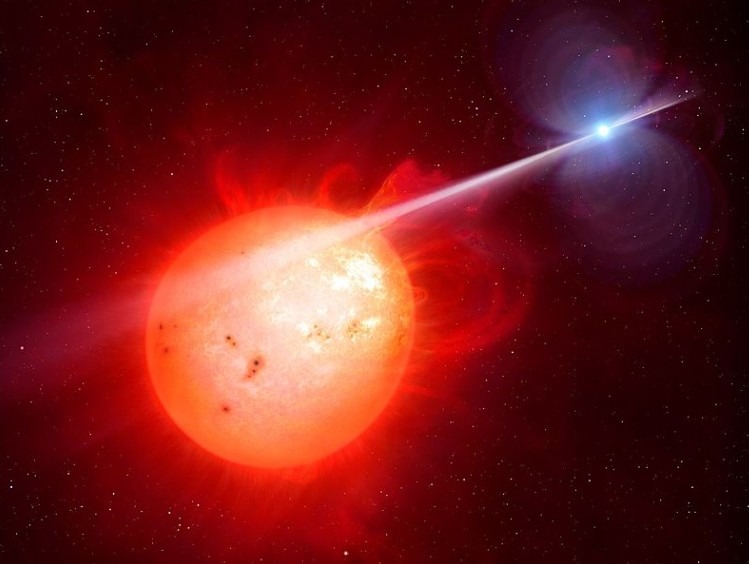Stargazing is perhaps one of the most loved recreational activities among the lovers of the heavenly bodies. Who does not like and amazed by their magnificence anyway? The moon, star clusters, the vast universe, shooting stars, and the serene and calming night sky. It may be overwhelming to some beginners in the field of astronomy, but the help of binoculars and beginner telescopes can aid in resolving what you are hunting up there.
Although, without a telescope, stars are easily seen in the night sky if the weather is good and there is no sky pollution to cover those beautiful and wonderful scenes. Stars are countless, just like the billions of galaxies are endless and enormous. But did you know that at least half of the universe’s stars are not only single points of light but instead belong to double or multiple star systems. Some studies suggest that it’s about 85 percent of the stars in the universe, and in some cases, a dwarf star is revolving around a giant sun. In others, there are two stars with equal size move around a common point in between them; however, in other cases, several stars move around each other. Regardless of how many stars are involved, a stellar system with two or more stars is called a binary or a double star.
So, do not underestimate the wonder a double star can make. It may appear as a single twinkling brilliant star in the night sky, but they are two stars shining together. If you have previous eye training in spotting stars, even a low-cost pair of binoculars can lead you to locate some constellations and galaxies.
In observational astronomy, a double star is visually double as they appear close to each other as viewed from Earth, especially with optical telescopes.
There are varieties of binary or double stars: the optical doubles, visual binaries, and the non-visual binaries. The gravitationally bound stars are referred to as the visual binaries stars that are separately visible with a telescope. Meanwhile, the optical doubles or other is visually bound stars are unrelated stars that appear close together through chance alignment with Earth. Non-visual binaries are stars with a binary status that resulted from more esoteric means, such as occultation (eclipsing binaries), spectroscopy (spectroscopic binaries), or anomalies in proper motion (astrometric binaries).
Advanced telescopes can shift previously non-visual binaries into visual binaries, as with Polaris A in 2006.
Mizar and Alcor form a classic example of the double stars. It is in the bend of the handle of the big dipper. Mizar is the second star from the Big Dipper handle’s end, and Alcor that appears about 12 minutes of arc from Mizar has a magnitude 3.99 and spectral class A5V, which appears fainter, but with good vision, you should be able to see it. However, with a small telescope, you will see another star- a third star-forming a triangle with the first two, another faint companion to Mizar.
Other double star pairs show a contrasting color. Albireo double star is a gold and green pair, while Almach is an orange and blue pair. Some famous binary or double stars include Alpha Centauri, Beta Lyrae, Rigel – Beta Orionis, Sirius-the Dogstar, and Spica. All these double-star systems have their own wonders to reveal. If you also want to know the best glow in the dark stars for children, open the given link.
WHAT MAKES A DOUBLE STAR?
Twins are born naturally in humans, but stars aren’t formed as twin stars or double stars, but the pair either creates a binary star or is an optical double, a visual illusion that appears from the observer’s point of view from the Earth.
In 1617, as requested by his friend, Galileo Galilei turned his telescope toward the second star from the Big Dipper handle’s end. He found out that one star seemed to be two; ultimately, it turned out to be six. William Herschel cataloged 700 pairs of stars in 1802, and he coined the word “binary” in reference to the double or pair of stars.
Stars are travelers around the galaxy, and sometimes those massive ones capture a passing weaker star, thus forming a new binary pair. This is only a rare event, and the common cause of this phenomenon is gas enveloping and dust collapsing itself to form a star splits and forms two or more stars instead. They evolve together, but not necessarily identically, and it still depends on their distance from each other.
Wide binaries don’t really affect each other, and so they often evolve much like single stars. However, close binaries significantly impact each other’s evolution, with mass transfers changing the stars’ composition. If one star explodes or sheds its outer layers and forms a pulsar, the companion is often destroyed, but if it survives, it continues to orbit the newly formed body, perhaps passing on more of its material. Meanwhile, if you are interested to learn more about the moon, visit the given link.



